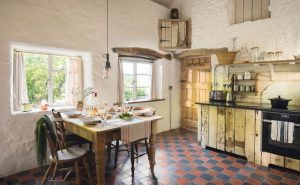So, you’re interested in home rendering to strengthen and add beauty to your external walls. However, you don’t know what type of rendering Melbourne to choose? If you’re confused, we’re here to help you out! Click to find out now about the best type of rendering for your walls.
The Golden Rule of Rendering
So what exactly is the best mix for rendering your walls? The truth is that it all depends on what you’re rendering on to. The golden rule of rendering is that you never make the mix stronger than the material that you’re going to render it to. If you’re rendering on lightweight concrete blocks, for instance; you wouldn’t want a really strong mix for it. The reason is that your walls tend to move, expand and contract with every change of the season. The last thing you’d want is your render to be the thing that stops your walls from moving. If it prevents your walls from expanding, your render will eventually shrink and crack.
Why Does Your Render Crack?
Most of the times, expanding walls are the main reason why your render cracks. People don’t tend to believe that their walls can expand, but it’s actually true. Another factor is when you put too much cement in your render, which can shrink and result in cracks. A common mistake that people do is that they do a 3:1 mix and say that it’s already enough. However, it won’t stop your render from cracking since there’s no real tensile strength in it. That means there’s no point in putting too much cement in your render. Click to find out more about this matter and make sure your render doesn’t result in cracking.
Why Adding Lime Creates the Best Rendering Mix
 We’ve done our research and have found out that the best rendering mix is a 6:1:1 mixture of six parts sand, one part of cement, and one part of hydrated lime. Make sure you use plastering sand and not building sand. The reason is that the latter promotes shrinking and cracking. There are instances where you can add some building sand to the mix for the base coat. However, it shouldn’t be your primary sand material.
We’ve done our research and have found out that the best rendering mix is a 6:1:1 mixture of six parts sand, one part of cement, and one part of hydrated lime. Make sure you use plastering sand and not building sand. The reason is that the latter promotes shrinking and cracking. There are instances where you can add some building sand to the mix for the base coat. However, it shouldn’t be your primary sand material.
It’s also important to put no more than one-part lime to one-part cement. The reason is that hydrated lime won’t set on its own. That’s why you need the cement to help it set and dry. The lime does give the entire rendering mixture body, along with making it creamy and a certain amount of elasticity. That way, if the building moves and expands, the rendering will adjust to the changes and not crack. Click to find out more about this type of mixture.





